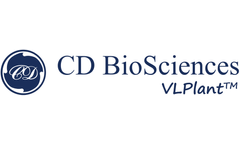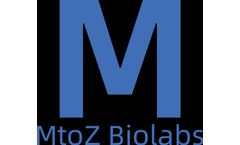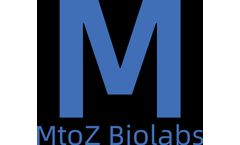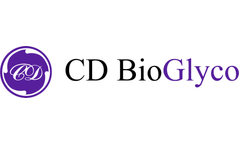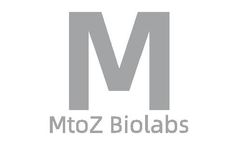Nucleic Acid Articles & Analysis: Older
79 articles found
Understanding Library Preparation Library preparation is the process of fragmenting nucleic acids, adding specific adapters, and enriching the desired sequences. ...
Similarly, pH-sensitive liposomes exploit the acidic microenvironment of tumors to trigger drug release. Limitations and Challenges Despite the progress made, liposomal drug delivery is not without its challenges. ...
Another gene delivery system is non-viral gene delivery, which uses non-viral vectors including liposomes, nanoparticles and some polymers to carry nucleic acids. Non-viral vectors have robust gene loading capacity, high safety, and practicability, simplicity of preparation. ...
Glycosylation is a biochemical modification process that involves linking sugar molecules to other biomolecules (such as proteins, nucleic acids, or lipids), thereby affecting their structure and function. ...
Wet lab endeavors encompass sample pretreatment, nucleic acid extraction, library construction, and ultimately, sequencing. ...
In this regard, the development of innovative tools and technologies such as in situ hybridization (ISH) probes has provided researchers with a powerful means to visualize and detect specific nucleic acids within cells or tissues. The CABR™ CAR-T Cell Detection ISH Probes represent a significant advancement in this area, offering a new tool for the precise ...
However, a comprehensive understanding of the antibody requires knowledge of its amino acid sequence, which can be achieved through antibody sequencing.Antibody sequencing is a nucleic acid sequencing process that determines the nucleotide sequence of the gene encoding the antibody, thereby inferring the amino acid sequence of ...
The Structure of Sugar Nucleotides Sugar nucleotides consist of a sugar molecule linked to a nucleotide, which is the building block of nucleic acids like DNA and RNA. The sugar component is typically a monosaccharide, such as glucose or galactose, while the nucleotide is usually uridine diphosphate (UDP) or guanosine diphosphate (GDP). ...
Study of Drug and Target Molecule InteractionsCD can be used to analyze the binding mode of drugs to their biological targets (such as proteins, nucleic acids, etc.). This information aids in understanding the drug's mechanism of action and optimizing drug design.3. ...
In addition to targeted drug delivery, nanobodies have also been utilized as carriers for various types of therapeutics, including small molecules, peptides, and nucleic acids. Nanobodies can be conjugated to these therapeutic agents to enhance their stability, improve their pharmacokinetics, and facilitate their delivery to specific tissues. ...
However, since the size and nature of the immune response depending on the homology of amino acid sequences, the amount of residual HCP, and the product dosing regimen, the results of the evaluation are almost irrelevant. ...
Metabolism is usually divided into two categories: catabolism, which breaks down large molecules for energy (e.g., cellular respiration), and anabolism, which uses energy to synthesize components of the cell, such as glycogen, proteins, and nucleic acids. Metabolism plays a key role in the fields of physiology, cell biology and medicine. ...
At their core, biopolymers are simply long chains of naturally-occurring biomolecules like proteins, peptides, and nucleic acids. Think of them as the body's own building blocks. Fluorescent biopolymers are a special type of biopolymer that have been engineered to absorb light and emit it at a different wavelength, effectively glowing in the dark. ...
ByMatexcel
We owe a significant chunk of these advancements to the realm of biochemistry, specifically amino acid products, peptide products, and peptide nucleic acid (PNA) monomers. ...
Click chemistry has revolutionized the field of bioconjugation, offering a robust and versatile approach for linking biomolecules, such as proteins, peptides, nucleic acids, and carbohydrates, to create novel materials and probes. ...
They could be used as a positive control or standard in the nucleic acid ...
Alkaloids prevent bacterial growth by employing various mechanisms, such as hindering bacterial nucleic acid and protein synthesis, altering the permeability of the bacterial cell membrane, causing damage to the cell membrane and cell wall, impeding bacterial metabolism, and inhibition of efflux pumps. ...
In recent years, various nucleic acid-based therapies (NBT) have emerged as effective and specific activators of endogenous gene expression. ...
Zinc can participate in the synthesis of more than 200 zinc-containing metalloenzymes and protein nucleic acids in the human body, maintain the structure and function of cell membranes, and also play an important role in the immune system. Zinc compounds used for food fortification include zinc gluconate, zinc lactate, zinc acetate, and trizinc dicitrate. Amino ...
Versatility: MST can be applied to a wide range of biomolecules, including proteins, nucleic acids, small molecules, and even nanoparticles. This versatility makes it a valuable tool in various fields, from drug discovery to nanotechnology. ...



